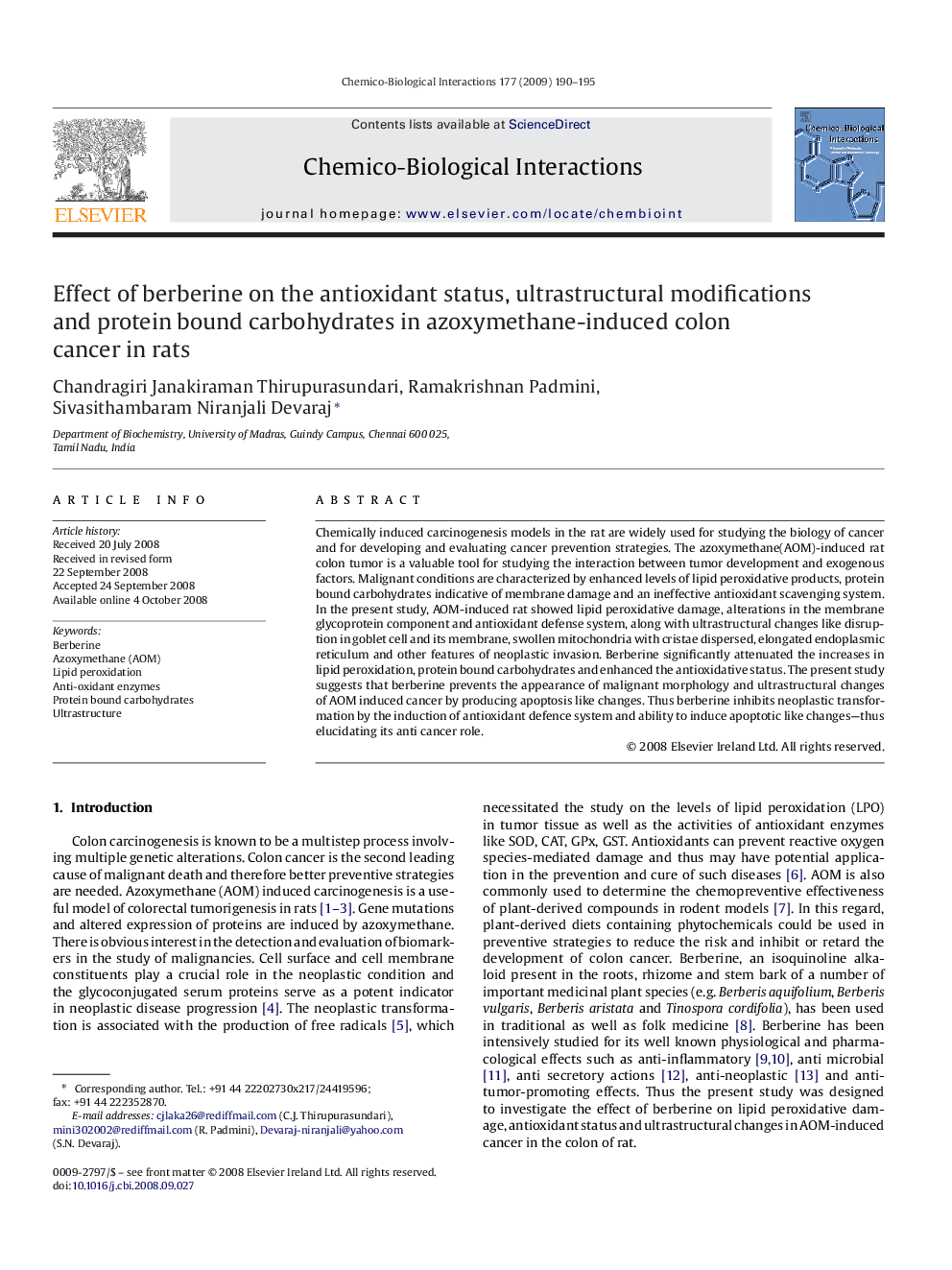| کد مقاله | کد نشریه | سال انتشار | مقاله انگلیسی | نسخه تمام متن |
|---|---|---|---|---|
| 2581716 | 1130204 | 2009 | 6 صفحه PDF | دانلود رایگان |

Chemically induced carcinogenesis models in the rat are widely used for studying the biology of cancer and for developing and evaluating cancer prevention strategies. The azoxymethane(AOM)-induced rat colon tumor is a valuable tool for studying the interaction between tumor development and exogenous factors. Malignant conditions are characterized by enhanced levels of lipid peroxidative products, protein bound carbohydrates indicative of membrane damage and an ineffective antioxidant scavenging system. In the present study, AOM-induced rat showed lipid peroxidative damage, alterations in the membrane glycoprotein component and antioxidant defense system, along with ultrastructural changes like disruption in goblet cell and its membrane, swollen mitochondria with cristae dispersed, elongated endoplasmic reticulum and other features of neoplastic invasion. Berberine significantly attenuated the increases in lipid peroxidation, protein bound carbohydrates and enhanced the antioxidative status. The present study suggests that berberine prevents the appearance of malignant morphology and ultrastructural changes of AOM induced cancer by producing apoptosis like changes. Thus berberine inhibits neoplastic transformation by the induction of antioxidant defence system and ability to induce apoptotic like changes—thus elucidating its anti cancer role.
Journal: Chemico-Biological Interactions - Volume 177, Issue 3, 12 February 2009, Pages 190–195